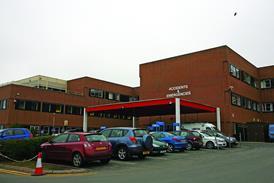The NHS is feeling nervous about its finances, especially given the tough funding challenge set by the Treasury. Good relationships within the service are vital if we are to transform it
The funding challenge set by the Treasury is a bitter pill for the NHS to swallow.
The pricing of services through the tariff is the ugly but effective remedy that has been used in recent years to squeeze out costs. With finances tight and demand rising, money is never far from NHS leaders’ minds.
‘A more sophisticated remedy that moves beyond punishing price cuts is needed’
Alongside debate over the amount of money we have at our disposal, we must now shift the debate to how that money is spent if we are to sustain the NHS into the future.
A new, more sophisticated remedy that moves beyond punishing price cuts is needed.
The toughest challenge
As we get closer to the general election, we will hear politicians and the media talk more and more about money in the NHS.
I suspect though we won’t hear them talk much about the national tariff, the efficiency factor, or even the differential deflator – the technical mechanisms through which the NHS has so far mostly met one of the toughest financial challenges it has ever faced.
The national tariff is more than a list of prices for services in hospitals. It establishes the financial incentives across the whole NHS.
‘Costs are beginning to rise again, because of implementing Francis and Keogh recommendations and safe staffing levels’
At the moment, those incentives seem to move in one direction: towards reducing the costs of existing services by slashing prices to save money.
This strategy has worked well up until now, and the NHS has saved almost £15bn in the last three years, with around half of these savings driven by tariff.
But most of these savings have been found in staff costs, by reducing agency spending, sickness absences and pay drift.
Those costs are now beginning to rise again, as a result of the implementation of the Francis and Keogh recommendations and the drive to ensure safe staffing levels.
Is the efficiency factor pushing it?
How far can a price driven cost cutting strategy go?
Monitor and NHS England think it can go even further and are proposing bigger price cuts in 2015-16 by increasing the “efficiency factor” from 4 to 5 per cent.
This target is ambitious, some say “courageous”, and our members are deeply concerned about how they will achieve it, particularly after a succession of price reductions.
‘Monitor and NHS England’s proposals risk pushing organisations into deficit’
Monitor and NHS England’s own research shows that a 5 per cent efficiency factor could see more than half of providers in deficit by 2015-16 if only 3 per cent savings are delivered. This is very worrying, especially given that expert analysis suggests 3 per cent might be a realistic expectation past 2015-16.
In effect these proposals risk pushing organisations into deficit. This does not represent a saving.
Of course, we can make the current model more cost effective through technical efficiency by “doing things right” and reducing the costs of delivering it.
However, there are only so many costs that can be taken out of the existing models. In parallel, we need to channel resources into more cost effective models of care, which can generate allocative efficiency savings from “doing the right things” in the first place. This is tricky stuff.
Good relationships are key
The marginal rate for emergency admissions isn’t currently working as a driver of allocative efficiency because the only fixed rule is the reduced price paid to acute hospitals.
The complementary part of the marginal rate needs to be hard wired into the system if the “remaining” funds are spent on those services that can reduce admissions. This in turn needs to link with the wider reform of urgent and emergency care.
Moving resources into new models of care won’t be easy and evidence suggests it takes time for us to see the benefits. Monitor and NHS England are aware of this but should not keep doling out the same old medicine of price cuts. we will be saying this in our response to the consultation on the tariff.
‘Conversations need to be more than just arguments about who wins and who loses in financial terms’
This is where the “how much” does come in. Price cuts can create tensions between commissioners and providers, between acute and non-acute services (see the differential deflator) and between finance and clinical colleagues.
But good relationships are vital if we are to transform services. Conversations need to be more than just arguments about who wins and who loses in financial terms.
Local relationships need to be looking at the other side of the financial coin: at quality, outcomes and on reducing people’s need for care more generally.
Make whole system solutions work
An honest debate on funding at the next election means talking about how much to spend on the NHS and what can be realistically expected with that funding.
The “2015 Challenge” brings partners together to challenge political parties to explicitly accept this burning issue facing the health and care system, and to produce election manifestos that allow local organisations the space to address it.
‘Doing the right thing on service delivery, pricing and funding will enable local relationships’
Accelerating payment system reform is an important part of this campaign, as is politicians committing to a longer term settlement and transitional funding to give the NHS the room to make the changes needed.
The Irish dramatist Seán O’Casey once said: “Money does not make you happy, but it quiets the nerves.”
The NHS is certainly feeling nervous right now and it is looking for the certainty and freedom to settle those nerves.
Organisations want to work together and demonstrate that whole system solutions do work. Doing the right thing on service delivery, pricing and funding will enable those local relationships, not pull them apart.
Rob Webster is chief executive of NHS Confederation


























8 Readers' comments